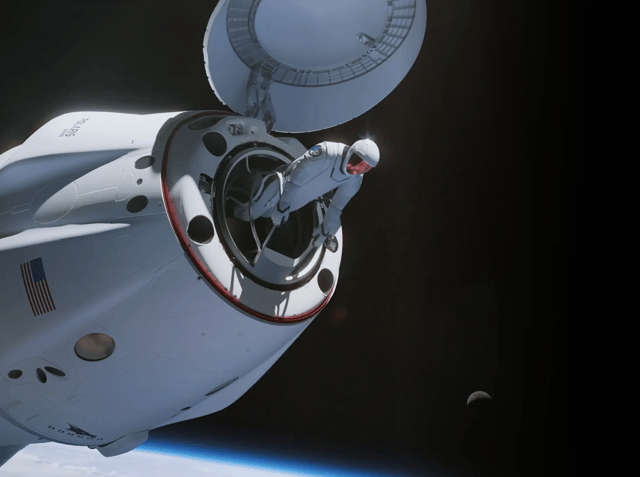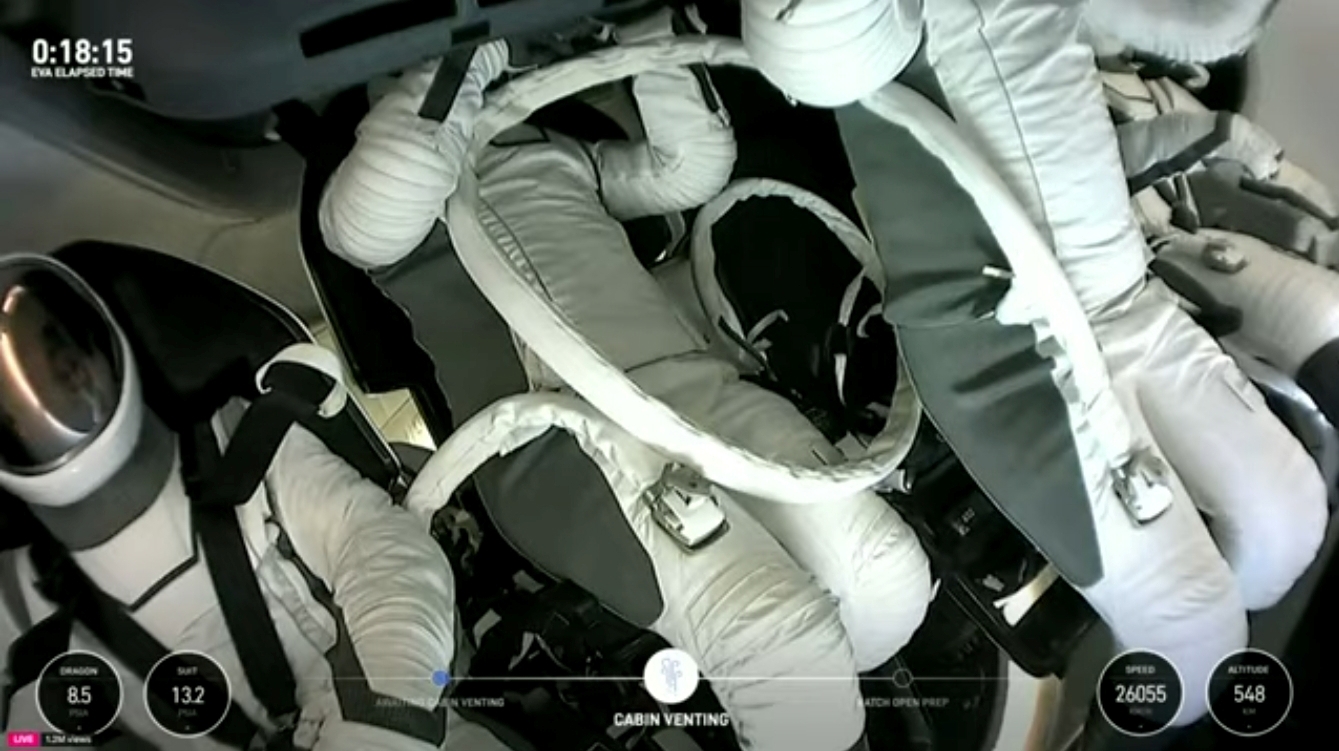In a few days it is expected that two of the Polaris Dawn astronauts will perform the first commercial spacewalk.

Artist rendering of the Polaris Dawn EVA (Polaris Program)
Based on the latest artist rendering it appears that the spacewalk is now planned to be a standup EVA, whereas previous artist renderings showed the astronaut floating near the capsule on a tether.
Since the SpaceX Dragon capsule does not have an airlock, all four of the Polaris Dawn astronauts will be wearing spacesuits and the Dragon crew cabin will be depressurized prior to opening the hatch. This is certainly not unprecedented and has occurred several times in the history of human spaceflight. Just listing the U.S. occurrences that I am aware of:
Gemini 4, 9, 10, 11, 12
Apollo 9, 15, 16, 17
Skylab 2
While I think it is safe to assume that the two Polaris Dawn astronauts who will be doing the EVA will be tethered in some way, I am wondering what the protocol will be for the two astronauts remaining inside the capsule, will they be strapped into their seats or tethered inside the capsule the entire time that the hatch is open? A second related question is whether there is precedent in previous capsule EVAs.
While on the one hand the obvious answer might seem to be yes for safety reasons, it seems like it would depend on what the other astronaut(s) tasks are during the EVA, as well as their location inside the capsule and the estimated risk of not being strapped in or tethered. For example if the other astronaut will be in their seat on the other side of the cabin monitoring the spacecraft systems, and will not be near the open hatch, it might seem unlikely that they would inadvertently float across the capsule and out the hatch.
On the other hand if the spacewalking astronaut ran into trouble and needed assistance, for example if they lost consciousness due to overexertion (something Tom Stafford was concerned might happen to Gene Cernan on Gemini 9) the other astronaut(s) might have to reach outside the hatch to pull them back in. Perhaps in that contingency there would have been a requirement to first tether themselves before assisting the spacewalking astronaut. Although apparently prior to the Gemini 9 flight Deke Slayton discussed with Stafford the possible need to "jettison" an incapacitated Cernan if he couldn't get him back inside, an action which Stafford reportedly said he would not even consider.
Another theoretical situation is if the commander performed a sudden maneuver with the RCS thrusters either intentionally or accidentally, which might cause another astronaut or even themselves to be flung through the hatch. However again this type of accident seems fairly unlikely.
I could not find any photographs that support either possibility (restrained or unrestrained). I did find a photo of the Gemini 9 capsule taken by Gene Cernan during his spacewalk, however Tom Stafford cannot be seen and is presumably in his seat.

Gemini 9 capsule (photo by Gene Cernan)
There was a simulation shown on live TV during Cernan's spacewalk (yes early spacewalks were carried live on network TV), the simulation seems to show the commander unrestrained in his seat, however of course this in itself is not conclusive of what happened during the actual spacewalk. A tether is in view, but it is not clear if this is the tether being used by the pilot who will be doing the EVA, since during this part of the EVA Cernan was only part way out of the hatch (a moment after this screenshot we see the pilot handing something to the commander).
One of the most daring spacewalks was on Skylab 2 (the first Skylab mission) when it had problems with one of its solar arrays. The Apollo spacecraft was steered close to the solar panel, the hatch was opened, and then Paul Weitz floated part way out of the hatch, with Joe Kerwin holding onto his legs, while commander Pete Conrad maintained control of the Apollo CSM. I don't know if Kerwin was tethered inside the capsule, or perhaps Conrad was ready to grab Kerwin's legs if he started to float out. The incident as it is often described paints a picture of high drama, with Weitz's life literally depending on Kerwin maintaining a good grip on him. However it seems just as likely that Weitz was tethered during the EVA, as well as Kerwin, with Stafford perhaps strapped into his seat, and with Kerwin merely providing maneuvering assistance to Weitz, not keeping Weitz from floating off into the abyss. But I don't know if there is any information that confirms or at least gives an indication of this one way or the other.

